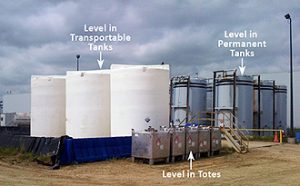The Tank Gauging System measures continuously the level, volume and temperature of the contents of ballast water, fresh water, cargo, fuel oil, bilge and mud tanks. Additionally, the vessel’s draught can be measured. High and low alarms can also be set.
Series 500 liquid level transmitters ensure precise tank content and draught readings. IS barriers are applied when connecting transmitters installed in hazardous areas. A dual axis inclinometer is used to determine trim and heel.
The transmitter and inclinometer digital outputs are fed directly into a Windows based PC. The tank contents data is corrected for trim and list and displayed in a digital bar graph format as well as numerically, along with the tank capacity and content’s specific gravity.
The user friendly touch screen panel PC enables easy switching between screens. The total number of tanks which can be monitored is unlimited.
The Tank Gauging System program is also available as a piece of stand alone software without the panel PC.
This article comes from liquidlevelsystems edit released

 The
The